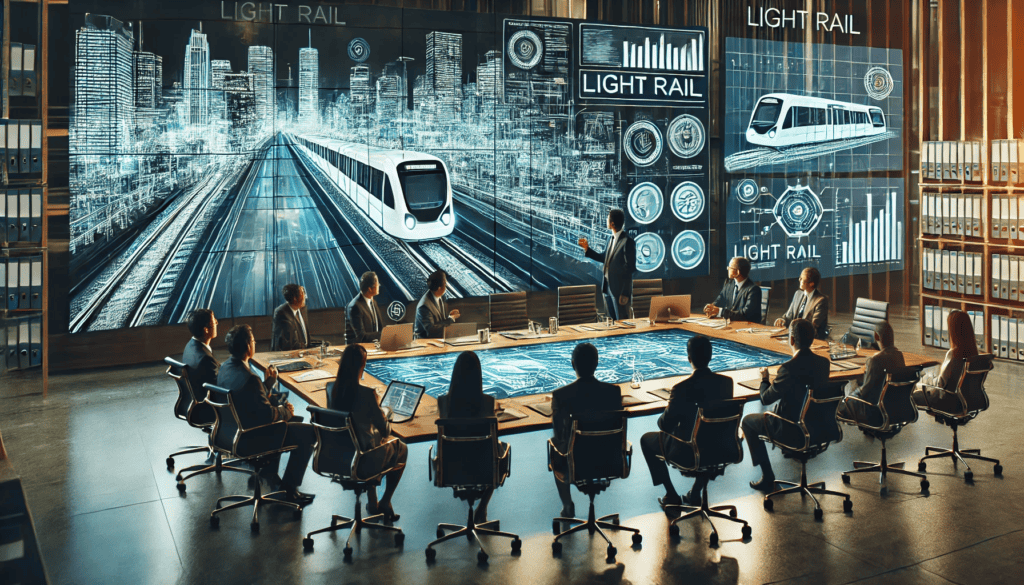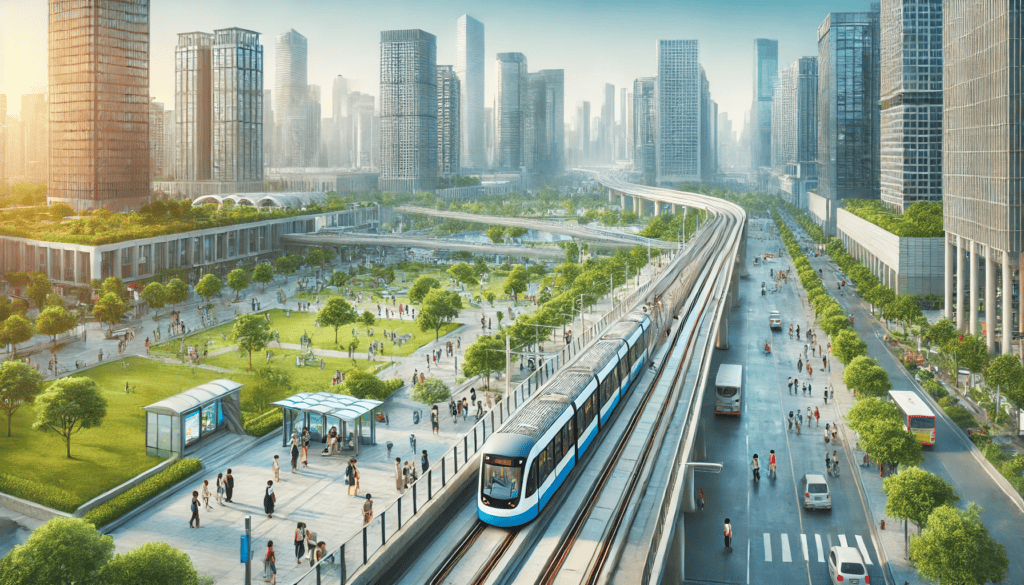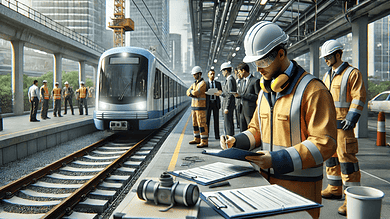Light Rail Technology: Next-gen Rail Development

The Future of Light Rail: Trends and Predictions
Light rail systems have become a cornerstone of urban transportation, offering efficient, eco-friendly, and reliable transit solutions in cities worldwide.
As urban populations grow and environmental concerns become increasingly pressing, the evolution of light rail technology and infrastructure is paramount.
This article delves into the current trends in light rail, predictions for its future, and insights from experts in the field, including light rail technology expert witnesses, rail system performance evaluators, and light rail engineering experts.
By examining these aspects, we aim to provide a comprehensive overview of the future trajectory of light rail systems and their pivotal role in shaping urban transportation.
Current Trends in Light Rail
Technological Advancements
In recent years, light rail systems have seen significant technological advancements that have enhanced their efficiency, safety, and passenger experience.
Automation is one of the most transformative trends, with automated trains reducing human error and increasing operational reliability.
These systems often include features like automated train operation (ATO), automatic train control (ATC), and driverless operations, which improve safety, optimize scheduling, and reduce operational costs.
Energy efficiency is another critical area of technological progress. Modern light rail vehicles are designed with energy-saving technologies such as regenerative braking systems, which capture and reuse energy that would otherwise be lost during braking.
Additionally, advances in battery and other energy storage technology and the integration of renewable energy sources, such as solar panels on stations and depots, contribute to more sustainable light rail operations.
Smart technologies are also being integrated into light rail systems to enhance passenger experience and operational efficiency. Real-time tracking, mobile ticketing, and dynamic passenger information systems provide passengers with up-to-date information, making travel more convenient and predictable.
These technologies also enable operators to manage fleets more effectively, responding dynamically to changing demand and operational conditions.
Sustainability Efforts
Sustainability is at the forefront of modern light rail projects. With increasing awareness of environmental issues, light rail systems are adopting eco-friendly practices and materials to minimize their environmental footprint.
Sustainable construction practices include using recycled materials, low-emission construction equipment, and environmentally responsible disposal of waste materials.
Light rail engineering experts play a crucial role in promoting sustainability. They design and implement systems that reduce energy consumption and emissions.
For instance, new light rail vehicles are often constructed with lightweight materials that improve fuel efficiency or energy consumption and reduce wear and tear on infrastructure. Additionally, green roofing and vertical gardens on stations help mitigate urban heat island effects and improve air quality.
Urban Integration
Another significant trend is the integration of light rail systems into urban environments. Urban planners and transportation authorities are increasingly recognizing the benefits of light rail in reducing traffic congestion and pollution. Light rail systems can help alleviate the pressures on urban road networks by providing an efficient and reliable alternative to car travel.
Effective urban integration involves designing light rail systems that complement existing transportation networks, including buses, trams, and cycling and pedestrian infrastructure.
This multimodal approach ensures that passengers can seamlessly transition between different modes of transport, making public transit more attractive and convenient.
Moreover, developing transit-oriented developments (TODs) around light rail stations encourages higher-density, mixed-use developments that foster sustainable urban growth.

Predictions for the Future
Technological Evolution
The future of light rail technology promises even greater advancements that will further enhance safety, efficiency, and passenger experience. Artificial intelligence (AI) and the Internet of Things (IoT) are expected to play a significant role in the next generation of light rail systems.
AI can optimize routing and scheduling, predict maintenance needs, and enhance safety through advanced monitoring and analytics. IoT devices can provide real-time data on various aspects of the rail system, enabling operators to make informed decisions and respond swiftly to any issues.
Integrating AI and IoT will also facilitate the development of fully autonomous light rail systems, where trains can operate without human intervention, reducing the risk of accidents and operational disruptions. These technologies will allow more efficient resource use, reducing energy consumption and operational costs.
Sustainability and Green Technology
Future trends in light rail will continue to prioritize sustainability and the integration of green technologies. Renewable energy sources, such as wind and solar power, will become more prevalent in powering light rail systems.
Advances in battery and other energy storage technology will enable the use of energy storage systems that can capture and store renewable energy, ensuring a reliable power supply even during periods of low renewable generation.
Sustainable materials and construction practices will also continue to evolve. Innovations in materials science will lead to the development of more durable and environmentally friendly construction materials. Additionally, the concept of circular economy—where materials are reused and recycled—will become more prominent in the construction and operation of light rail systems.
Urban Expansion and Smart Cities
The role of light rail in developing smart cities is set to expand. Smart cities leverage digital technology and data to enhance the quality of urban life, and light rail systems will be a critical component of this vision. Smart light rail systems will fully integrate with other urban infrastructure, enabling seamless mobility and connectivity.
Urban expansion will see light rail networks extending into suburban and rural areas, providing high-quality public transit options beyond the city center. This expansion will be driven by the need to reduce car dependency and promote sustainable transportation in growing urban areas.

Expert Opinions
Insights from Light Rail Technology Expert Witnesses
Light rail technology expert witnesses provide valuable insights into the current state and future of light rail technology. These experts often develop and evaluate new technologies, ensuring they meet industry standards and provide tangible benefits. Their expertise helps understand emerging technologies’ potential and impact on light rail systems.
For example, an expert witness might evaluate the implementation of AI in train control systems, assessing its effectiveness in improving safety and efficiency. Their analysis can provide crucial evidence in legal cases or regulatory evaluations, ensuring that technological advancements are implemented responsibly and effectively.
Evaluations by Rail System Performance Experts
Rail system performance evaluators play a crucial role in assessing the effectiveness of light rail systems. They use a variety of metrics to evaluate system performance, including punctuality, reliability, safety, and passenger satisfaction. Their evaluations provide valuable feedback that can inform improvements and guide future developments.
Performance evaluators also play a key role in identifying and addressing operational challenges. They can pinpoint issues such as bottlenecks, maintenance needs, and safety risks by analyzing data from various sources. Their recommendations help operators optimize system performance and ensure a high level of service for passengers.
Contributions from Light Rail Engineering Experts
Light rail engineering experts contribute to developing and implementing advanced engineering solutions. Their expertise spans various light rail design and construction aspects, including track design, vehicle engineering, and infrastructure development. Their contributions ensure that light rail systems are built to the highest safety, efficiency, and sustainability standards.
Engineering experts also play a crucial role in addressing technical challenges and implementing innovative solutions. For example, they might develop new track designs that reduce noise and vibration, improve passenger comfort, and minimize environmental impact. Their expertise ensures that light rail systems remain at the forefront of technological and engineering innovation.

Recap of Current Trends
The current trends in light rail systems highlight significant technological advancements, sustainability, and urban integration. Automation, energy efficiency, and smart technologies transform light rail operations, while sustainable practices and materials minimize environmental impact. Integrating light rail into urban environments enhances the quality of urban life by reducing traffic congestion and pollution.
Summary of Future Predictions
Future predictions for light rail systems indicate a continued focus on technological evolution, sustainability, and urban expansion. AI, IoT, and renewable energy will drive the next generation of light rail systems, while smart city integration will enhance connectivity and mobility. Expanding light rail networks into suburban and rural areas will provide high-quality public transit options beyond the city center.
Final Thoughts
The future of light rail is bright, with continuous innovation and expert involvement driving advancements in technology, sustainability, and urban integration. light rail technology expert witnesses, rail system performance evaluators, and light rail engineering experts will play a crucial role in shaping the future of light rail systems.
Their expertise ensures that light rail systems remain safe, efficient, and sustainable, providing high-quality public transit options for urban populations.

